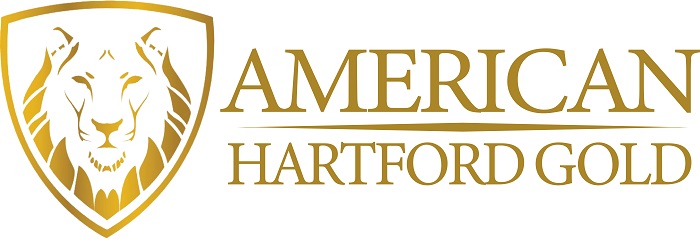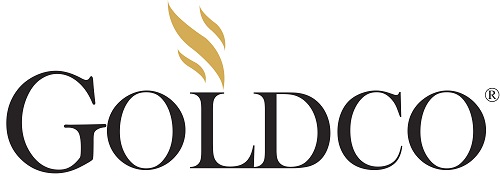Last Updated on February 15, 2024 by Ben
Excess 401 k Plan
When it comes to retirement savings, one of the most important things you can do is make sure you are taking full advantage of your 401(k) plan. This means contributing as much as possible each year, up to the maximum allowed contribution. But what happens if you exceed your 401k plan limit? This article will discuss what to do if you go over the 401(k) contribution limit.
What is a 401(k) Overcontribution?
When you defer more than the IRS allows to a 401(k) plan in any given year, you make an overcontribution. For 2020 and 2021, the IRS restricts 401(k) employee contributions to $19,500. If you’re above 50 years of age, you may contribute an additional $6,500 as a catch-up contribution.
Most overcontributions occur when a person contributes to more than one 401(k) plan in a year.
If you switch jobs in the middle of a year, if you have two jobs, or (in rare circumstances) if you get a significant raise midyear while maintaining your contribution rate as before, this might happen.
It’s critical to distinguish between an overcontribution and something else. Catch-up contributions are not considered overcontributions. Your employer’s matching contributions will also not push you over the wage deferral limit. The IRS allows for much larger overall contributions than the employee salary deferral. In 2021, that sum is $58,000, or $64,500 for those age 50 and over. For 2022, it has been raised to $61,000, or $67,500 for people aged 50 and above.
What to Do if You’ve Overcontributed to Your 401(k)
If you discover that you’ve overcontributed to your 401(k), contact your employer or plan administrator as soon as possible. Explain that you’ve made an excess deferral and the amount of it.
If you overcontribute, it’s crucial to detect this mistake before April 15 of the following year.
Once you’ve alerted your plan administrator, resolving your overcontribution problem might take some time. The plan administrator is needed to distribute the extra deferral and earnings attributed to those funds by a certain date specified in the 401(k) plan. Earnings are figured based on the account’s overall change in value throughout this period.
It’s critical to complete this procedure before April 15 of the year after the overcontribution is committed, so you’ll want to double-check all of your W-2s and records as soon as you get them to ensure there’s time to correct the mistake if you overpaid.
What Overcontributions Mean for Your Taxes
If you overcontribute, you may be required to pay additional taxes. HR will send you some new tax forms after the mistake has been fixed.
The first kind is a corrected W-2. The amount of the overcontribution will be shown on the new W-2, which will result in an increase in taxable income equal to that amount. This is the figure you’ll need to disclose to the IRS on your Form 1040 for the year of the amended W-2. If you’ve already completed your taxes for the year, you’ll have to file an amended return.
You’ll get a 1099-R for the salary you received from your overcontribution. You’ll receive it in January of the following year if you repay your overcontribution by that date.
If you don’t notice and correct the overcontribution mistake before tax day of the year after the overcontribution, your 1099-R could be much higher (that is, include more taxes). That’s because the IRS has stated that for errors after the deadline, the oversupply “is not taken into account in establishing the taxable amount of any potential benefits or distributions under the plan.”
In other words, rather than the 1099-R simply reflecting the earnings on the overcontribution, it will include all of the distributions, including the initial overcontribution. That income was taxed twice when you earned it and again when you corrected the over withholding: once in the year you made it, and once in the year you correct your mistake.
There’s also a 10% early withdrawal penalty if you discover an error late. This is in place for overcontributions corrected after April 15 for individuals under the age of 59 1/2.
Where to Put Your Money Instead of Overcontributing
If you have more money to put away for retirement, here are some other options to investigate.
➤ An IRA
IRA and 401(k)s are similar in many respects. In fact, an IRA may give you greater control over your investment choices and usually has lower fees. While a 401(k) generally restricts your investment options to a few mutual funds and ETFs, an IRA allows you to invest in almost anything your broker provides.
You’ll have to be aware of income limitations that may affect your eligibility to deduct your contribution on your tax return or, in the case of a Roth IRA, whether you can contribute at all. The maximum contribution amount for 2021 and 2022 is $6,000, with an extra $1,000 catch-up allowance for those over 50.
➤ An HSA
A health savings account (HSA) is a combined savings and investment account that allows you to set aside money for healthcare expenditures. You invest your cash tax-free, after which it grows tax-free. Then, if you take out the money to pay for qualified medical costs, it’s also tax-free.
HSAs require you to hold a qualifying health insurance plan, so check your plan details to make sure you’re eligible. Individual or family limits for 2021 are $3,550 and $7,100 for an HSA account. For 2022, the amounts rise to $3,650 and $7,200, respectively. An extra $1,000 can be contributed by individuals age 55 and older.
➤ A traditional (non-tax-advantaged) brokerage account
The disadvantage of investing in a regular brokerage account is that you will not receive a tax break, and you will be responsible for taxes on your investment profits year after year.
The benefit? You’ll be free to invest that money however you choose. You may save all of it for retirement or earmark a significant portion of it for your golden years while also utilizing the cash for other requirements or demands that arise along the road, such as home enhancements, vacations, or tuition payments for your children’s education.
➤ An annuity
An annuity is a contract between an insurance company and you in which you receive a set amount of money (either a lump sum in the future or a series of payments over time) in exchange for a fixed upfront payment.
Annuities are sometimes seen as a last-ditch option for retirement savings, owing to their complexity and the possibility of high costs. However, if you’re searching for another dedicated source of retirement income and you’ve already used up your 401(k), an annuity is worth considering.
Common Reasons for Excess 401(k) Contributions
Here are a few situations in which overcontributions are more likely to occur:
- You switched employers and retirement plans during the tax year. Verify that your new retirement plan provider is aware of your old retirement plan’s year-to-date balance. Consider rolling over previous employers’ 401(k) accounts into your new plan or an individual retirement account.
- You have two jobs with two retirement plans. It’s crucial to note that the aggregate amount of contributions to multiple retirement plans like a 401(k) and 403(b) can’t exceed the limit.
If you’re a participant in a 457(b) retirement plan, your contribution limit is generally higher.
- You got a raise or bonus during the tax year. Many individuals set and forget their automatic contribution rates as a percentage of income in order to receive the complete matching funds from their employer.
It’s a good scheme to put away as much money as you can toward retirement. It might be difficult to go over the limit, but any fine will pale in comparison to the long-term benefits of retirement savings. Also, keep in mind that you may still invest that money in a taxable brokerage account.
Recommended IRA Companies
Augusta Precious Metals



www.augustapreciousmetals.com



Star Rating
Augusta Precious Metals, a precious metals firm, offers guidance on the economy and how it affects people’s retirement. They also allow IRA account investors to feel more secure about retirement by allowing them to invest in gold and silver.
If you have a precious metals IRA, you may diversify your retirement accounts by adding alternative assets to the list of predetermined investments. Alternative assets might also be used to help balance your portfolio and even offset losses from other types of investments in a precious metals IRA.
The firm is recognized for its experienced, trained representatives who can help consumers understand the economy and gold and silver. They’ll be able to assist you in developing a bespoke gold and silver portfolio based on your preferences as long as you tell them about it.
American Hartford Gold



www.americanhartfordgold.com



Star Rating
The company known as American Hartford Gold is located in Los Angeles. It has been in business since 2015. If you don’t have a lot of financial knowledge, they can even help you invest in precious metals. Even if you don’t have a lot of industry expertise, you may make an informed selection based on the help of their expert specialists.
The firm is run by a family with over 20 years of expertise in the silver and gold markets. They want to help both seasoned and inexperienced investors achieve their goals by teaching them good precious metal usage.
They also insist that the gold and silver they offer are of the highest quality. They provide a full refund if you are unhappy with your purchase, allowing you to return or exchange it for something different.
Goldco



www.goldco.com



Star Rating
Goldco allows its customers to safeguard their present retirement assets by shifting previous retirement accounts into gold and silver IRAs. It’s apparent that Goldco specializes in offering gold IRA services. Because of its unrivaled white-glove treatment, it’s no surprise why Goldco has a solid consumer following.
The company is ecstatic about its client service, which includes before, during, and even after you establish an account. They comment on numerous occasions when they assist inexperienced customers throughout the process of establishing a gold IRA and trading existing assets. Customers may also request assistance from in-house gold and silver specialists.
Final Thoughts – Excess 401 k Plan
If you have an excess 401 k plan, it’s important to take some time to understand your options. You may be able to roll the funds over into another retirement account or even withdraw the money without penalty. However, before you do anything, it’s important to speak with a financial advisor to make sure you are making the best decision for your individual situation.


